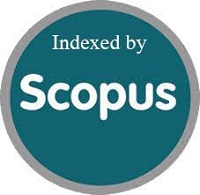Value Orientation Scale: The Validation Of The Pancasila Scale
DOI:
https://doi.org/10.15408/jp3i.v1i3.10703Keywords:
Pancasila values, validation, value orientation, Indonesia, valuesAbstract
In previous research (Meinarno & Suwartono, 2011), we developed 32 items from five values of Pancasila, however the psychometric properties of the scale are yet to be explored. In this reasearch, we identfied five dimensions of the scale, namely spirituality, humanity, nationality, democracy, and social justice. Using convenience sampling, with Webropol survey software to collect the data, of 234 participants, 59% were female, with range of age 15 35 years old (M=18.42, SD = 1.74). In this research, we focused on construct validation of a measurement model using confirmatory factor analysis. We found that the Pancasila scale consists of 25 items. The Cronbach's alpha coefficients for each dimension were 0.78, 0.70, 0.79, 0.70, and 0.77 respectively. Then, we explored the underlying factor structure and found five latent value factors and these were spirituality, humanity, nationality, democracy, and social justice. The five factors,each formed a unidimensional scale. However, these five latent factors cannot be explained by the high order of the latent factor, namely Pancasila. The second order factorial structure using confirmatory factor analysis did not fit. The fit indices showed that the model did not fit the data well. The results of CFA did not confirm the presence of a second-order factorial structure of Pancasila.
References
Arinanto, S. (1997). The process of formulation of Pancasila state basis: Studies on the position of Pancasila as the basis for the State and of the polemics about the birth of Pancasila and the diggers in the historical perspective of the s t a t e a d m i n i s t r a t i o n l a w. Graduate thesis graduate program Studies Legal Studies Program, U n i v e r s i t a s I n d o n e s i a . Unpublished manuscript.
Byrne, B.M. (2001). Structural equation modeling with AMOS: Basic concepts, applications and programming. Mahwah, NJ: Lawrence Erlbaum Associates, Inc.
Crocker, L. & Algina, J. (1986). Introduction to Classical and Modern Test Theory. New York:
Horcourt Brace Jovanovich.
Daroeso, B. (1989). Pancasila p h i l o s o p h y . F i l s a f a t Pancasila.Yogyakarta: Liberty.
Hu, L., & Bentler, P. M. (1999). Cutoff criteria for fit indexes in covariance structure analysis: Conventional criteria versus new alternatives. Structural Equation Modeling, 6, 155.
Kaplan, R.M., & Saccuzzo, D.P.( 2009). Psychological Testing: Principles, Applications, and
Issues (7th Ed). California : Wadsworth, Cengage Learning.
Kelloway, E. K. (1998). Using LISREL for structural equation modeling: A researcher's guide.
Thousand Oaks, CA : Sage Publications, Inc.
Markum, M.E, Meinarno, E.A., & Juneman. (2011). Hubungan I d e n t i t a s Et n i s , P a n c a s i l a terhadap Identitas Nasional. Final Research Report DRPM UI. Unpublished manuscript.
Meinarno, E.A. & Suwartono, C. (2011). The Measurement of Pancasila: An effort to make psychological measurement from Pancasila values. Mind Set, 2, 2, 104-110.
Notonagoro. (1987). Pancasila: The popular scientific. Jakarta: Bumi Aksara.
Prawiranegara, S. (1984). Pancasila as the Sole Foundation. Indonesia, Vol. 38 (Oct., 1984), pp. 74-83.
Poesponegoro, M.D., & Notosusanto, N. (1993). Indonesian national history VI. Jakarta: Balai Pustaka.



